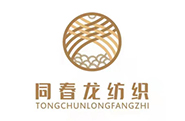Characteristics of knitted fabrics
Knitted fabrics occupy an important position in the textile industry with their unique structures and properties. First of all, the softness and comfort of knitted fabrics is one of its most notable features. Compared with traditional fabrics, knitted fabrics use different weaving methods, which make the interlacing of fibers more flexible, so the texture is softer and the touch is more comfortable. This makes knitted fabrics one of the favorite choices for people to wear in their daily lives.
Knitted fabric has good breathability. There are many tiny pores in the knitted structure, which allow air to flow freely, thus enhancing the breathability of the fabric. Wearing knitted fabrics can effectively keep the skin dry and comfortable, reducing the feeling of stuffiness, especially in summer or during exercise.
Knitted fabric has excellent elasticity. Through precise knitting technology, knitted fabrics can stretch and recover to a certain extent, which makes the clothing more body-fitting and increases wearing comfort and flexibility. Whether it's stretching or everyday activities, knitted fabrics provide the ideal fit.
Knitted fabrics are easy to keep warm. Due to the characteristics of the knitted structure, there are a large number of gaps and gases in the fabric, which can more effectively isolate the cold outside air and maintain body temperature. Therefore, in the cold season, choosing clothing made of knitted fabrics can effectively provide additional warmth and bring a comfortable and warm feeling to the wearer.
Application fields of knitted fabrics
Fashion clothing: Knitted fabric is one of the most popular fabrics in the fashion industry and is widely used in the design and manufacturing of various fashion clothing. From casual T-shirts to high-end luxury wool sweaters, knitted fabrics can meet designers' requirements for comfort and style. Its softness and elasticity allow knitted clothing to fit the curves of the body, showing beautiful lines and comfortable wearing.
Household items: Knitted fabrics are also widely used in the manufacture of household items, such as blankets, pillows, cushions, etc. Knitted household products are not only soft and comfortable, but can also add warmth and comfort to home spaces and add warmth to family life.
Sportswear: Sportswear needs to be designed with the wearer's comfort and mobility in mind. Therefore, knitted fabrics have become one of the preferred materials for many sportswear. Whether it is running, yoga or basketball, knitted fabrics can provide enough elasticity and breathability to provide athletes with a free and comfortable wearing experience.
Industrial use: In the industrial field, knitted fabrics are also widely used, such as car seat covers, car interiors, labor protection clothing, etc. Its wear resistance and strength can meet the durability and comfort requirements of industrial products, providing a safer and more comfortable wearing environment for the workplace.
The Importance of Knitted Fabrics in the Fashion Industry
Knitted fabrics play an irreplaceable role in the fashion industry. First of all, the design flexibility of knitted fabrics provides fashion designers with a broad creative space. Its rich pattern, color and texture provide fashion designers with a variety of choices to create more personalized and fashionable clothing.
The production process of knitted fabrics is also constantly innovating and improving. With the advancement of science and technology and the improvement of craftsmanship, the quality and functions of knitted fabrics have also been greatly improved. The constant emergence of new styles, new patterns and new technologies has made knitted fabrics a dark horse in the fashion industry, constantly promoting the development and upgrading of the fashion industry.

 English
English 中文简体
中文简体 русский
русский Español
Español









